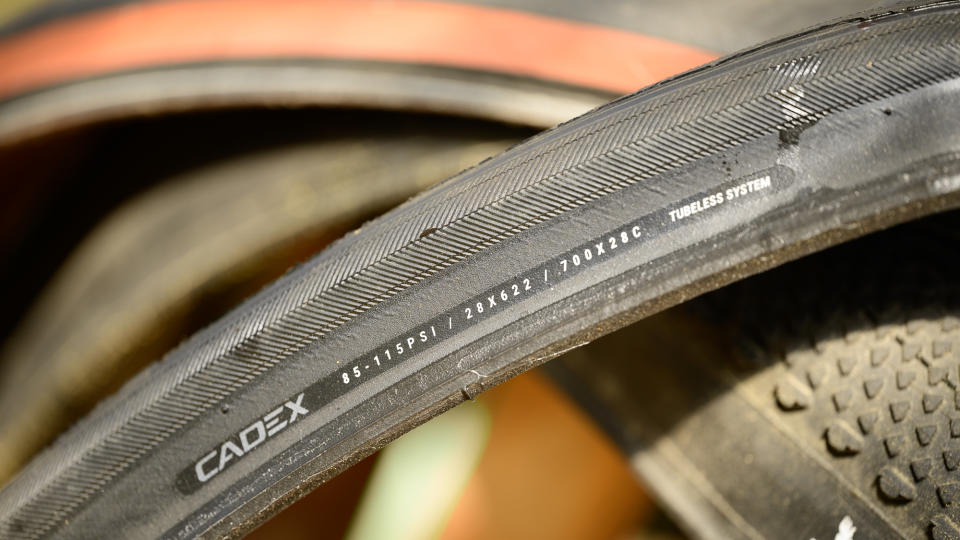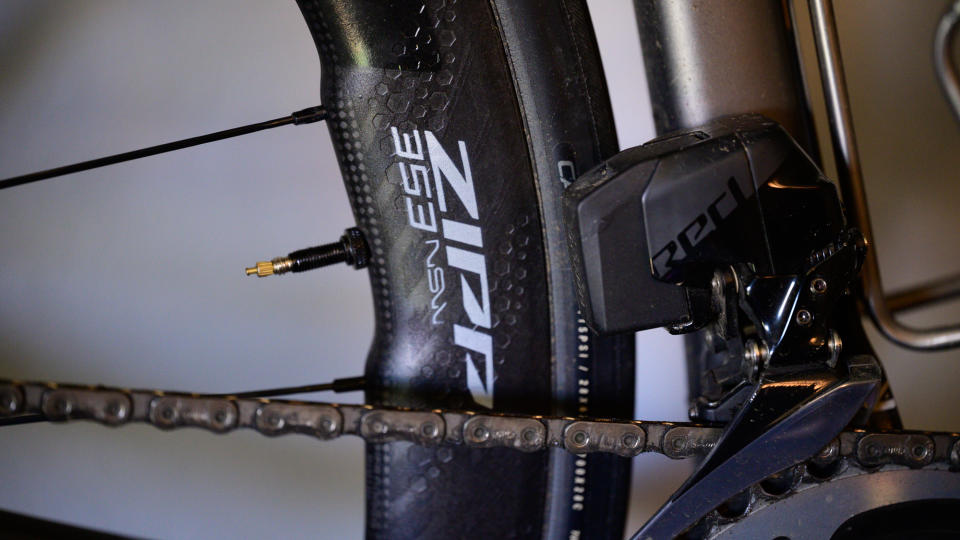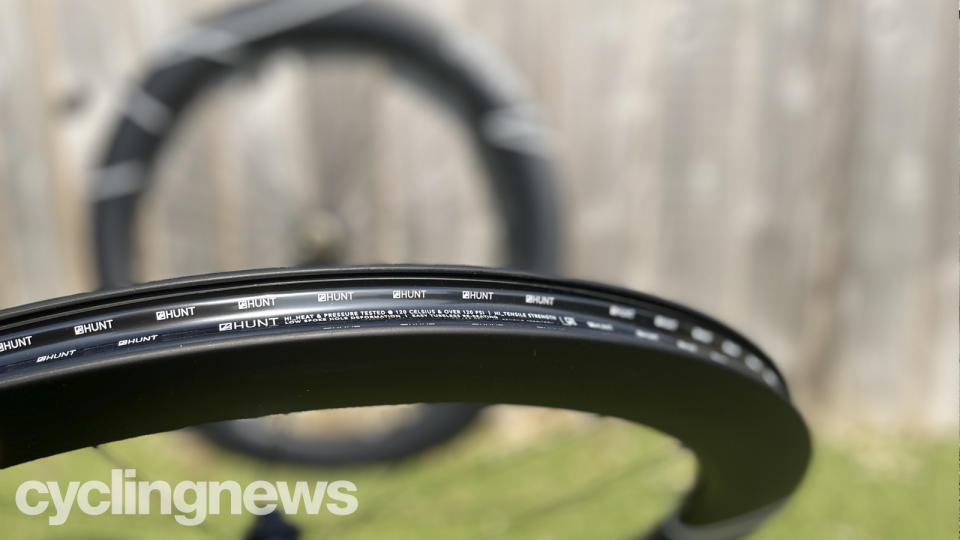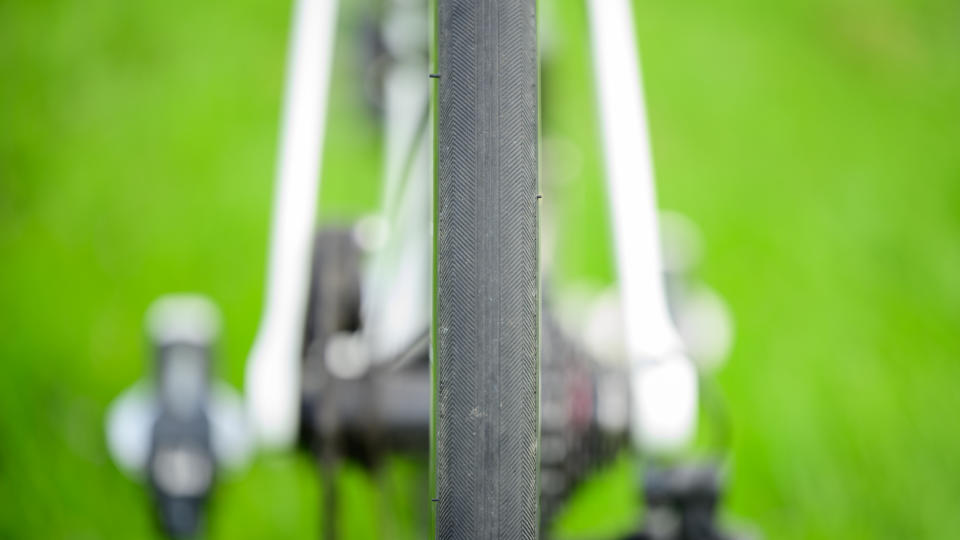Changes to ETRTO: Do new wheel and tyre combination recommendations affect your safety?

In recent years, the trend in wheels and tyres has taught us that wider is better. As new wheels come to market, the marketing team will happily follow the lead of modern riders who prefer bigger tyres for more comfort. At the same time, the engineers involved continue to show concrete advantages. Wheels are more stable in crosswinds when the exterior is wider with a rounder point. Pairing wider wheels with wider tyres makes the whole system aerodynamically faster. Given all this, wheels and tyres have steadily grown.
Over the last few years, the informal standard has shifted. Around 2020 the vast majority of new wheels coming to market had a 19mm internal width and most people would have paired that with a 25mm tyre. By 2023, things have shifted to a new informal standard of 21mm wheels paired with 28mm tyres and another shift seems to be on the horizon. The most forward-thinking wheel manufacturers started to not only build hookless wheels but have also been expanding the internal width from 21mm up to 25mm. Then, seemingly out of nowhere, something changed.

The new recommendation
When you head to the local bike shop and pick up a new set of tyres, you probably don't think too much about the infrastructure behind that purchase. There's a brand of tyre you like and you buy the desired size for your application. That tyre size you chose, and the way it fits your wheel, is actually pretty complicated though.
There's an organisation out there that helps make sure everyone is measuring things the same way and the measurements are comparable. You can think of the ETRTO, European Tyre and Rim Technical Organisation, as a measure against the proliferation of competing standards. The ETRTO describes the goals of the organisation as there to "achieve interchangeability of pneumatic tyres, rims and valves" and "establish common engineering dimensions, load / pressure characteristics and operational guidelines."
The ETRTO is actually a much larger organisation that covers a wide range of almost anything that has wheels and tyres. Bikes are just one small piece of the larger puzzle but the system works the same way. The ETRTO is not an entity that stands alone. Instead, it is a loose collection of members with membership "open to any manufacturer of tyres (pneumatic and/or solid), rims or valves, and whose manufacturing facilities are located in Europe"
The ETRTO does not create recommendations on its own. Instead, each member does testing and makes suggestions. When a standard is on the table members rely on that testing to anonymously vote yes or no and the majority rules. This year there is a new recommendation that may come as a surprise given the current state of the market. Specifically, the smallest tyre recommended for use on a 25mm internal width wheel is 29mm. No one is saying exactly why the recommendation is being changed but the obvious conclusion is that it's about keeping tyres on wheels.

What do wheel companies think of the new recommendation?
The new recommendation isn’t a standard and in many ways, it's years behind the state of the market. Zipp announced the 353 NSW with a 25mm internal width in April of 2021 and Enve launched the updated SES lineup with multiple 25mm internal width options in May 2022. Both are road specific and there is the expectation that 28mm tyres will often be the go to choice. Is that an unsafe combination?
Zipp is one of the largest manufacturers of bike wheels and also a member of the ETRTO. With that unique position in the industry, we asked Zipp first and the brand responded emphatically saying:
"As participants in the ETRTO standards meetings, we knew the compatibility table would change. We understand the updates, but they contradict our position.
"Zipp has tested, designed, and developed several popular and professionally proven wheelsets with 23 and 25mm internal widths. We know there have been enough wheelsets ridden in the past several years with the 28c tires on 25mm rims to prove that the combination is safe and delivers many proven performance benefits.
"And, while the new compatibility table removes the combinations that Zipp advocates for, the current table will move to a section of the ETRTO norm called PSD, the Previous Standard Data, demonstrating that those combinations are safe and can still be used.
"Wide rims on the road are growing more popular because of their clear and demonstrable performance benefits. Zipp data shows that larger tyres at lower pressures are faster, and we will continue to encourage customers to consider larger tires.
"Additionally, Zipp has been working with many major bicycle tyre suppliers who have agreed to maintain compatibility for those combinations. Tyre manufacturers own the responsibility of tyre retention, they prioritise safety and performance, and it is their prerogative to declare which tyre sizes can be used.
"Zipp's tyre compatibility chart is regularly updated with the latest information from tyre manufacturers as information becomes available. We urge riders to consult the chart for clear tire and Zipp wheel compatibility information."
One thing you might notice is that Zipp is doing tests on each tyre and making a recommendation. If you are curious, check out the Zipp Road Hookless Tire Compatibility Guide to see combinations known to work together. The fact that the list exists though opens its own questions. Is that the only way to confirm compatibility?
It would seem that the answer is no, at least according to Enve. Enve has no list of tested tyres and yet the brand responded with similar themes saying:
"As pioneers of the wide, hookless, tubeless, aero road rim movement, we have seen the good the bad and the ugly as it relates to tire and rim compatibilities. We are excited that as an industry we have largely moved past those times and into an era of more widespread understanding and agreement upon the factors that matter when pairing rim and tire in a safe and reliable manner.
"At ENVE, we understand the importance of providing tire and rim compatibility guidance to our consumers. While we appreciate the recommendation from ETRTO, we believe it should have included 25mm inner rim widths for pairing with 28mm tires. ENVE has been designing, testing, and selling hookless road and gravel wheels since 2016 and in that time, we have established that the combination is not only safe, but the pinnacle of performance on the road.”
Given that both Enve and Zipp have road-specific wheels with a 25mm internal width, it seemed prudent to also hear from other brands. Hunt Bike Wheels is a brand known for pushing the width of road wheels for greater stability. Right now though, the brand's current stable of road wheels is somewhat conservative when it comes to tyre retention specs. When inquiring about why, Hunt responded by voicing support for the process, saying: “Hunt’s in-house engineering and development teams strive to deliver the best possible products to riders from a performance and safety standpoint and that comes with working in tandem with the updated ETRTO guidelines to create the safest wheel and tyre combination for riders.”

What do tyre companies think of the new standard?
Wheels brands are only one side of the equation when it comes to tyre retention. Both wheel and tyre companies make up the ETRTO and part of what the organisation does is help ease any tension as the two interface. As a whole, tyre brands seemed more cautious in their responses. Pirelli responded in a very similar way as Hunt by only voicing general support for the work of the ETRTO as a group.
Meanwhile, Continental was a little more clear in some ways but still cautious. When asked specifically about testing 28mm tyres on 25mm rims, Continental responded by saying: "Part of our development process is to ensure compatibility of tires to the range of rims that are recommended by the ETRTO. Part of the internal testing procedure is to ensure the compatibility of the minimum ETRTO standard proposed by the 'standards manual'. Especially the example with a min. 29mm tire on 25mm internal width rim is driven by an increasing amount of TSS [tubeless straight side - aka hookless] rims and boundaries of the development specification. The aim behind this recommendation is to ensure the highest safety for consumers even under challenging pairings or even a 'misuse.'"
You'll notice that doesn't get into specifics about the core of the question. There's no clear statement addressing a 28mm tyre on a 25mm rim. Continental was also unwilling to detail the brand's internal testing protocol and only responded that "Continental is not able to share this publicly."
Still, Continental was willing to be a clear voice in agreement with the final ETRTO recommendation saying that the "recommendations and standards which are implemented by the ETRTO are a common ground to build an industry-standard between rim, tire and valve manufacturers. Those standards should be considered as a baseline for manufacturers and developers where improvements and innovations can arise from. The main intention behind the standards are 'barriers' to ensure a safe and functional surrounding that parts in the industry are compatible with each other and ensure all the time safety for end consumers. So yes, Continental agrees with the recommendations from ETRTO."
Schwalbe bucked the trend. The latest published pdf outlining compatibility is from 2022 and lists 28mm tyres as compatible with 25mm rims. Product Manager Felix Schäfermeier was also quite open about the challenges the industry faces and how the system worked when stating: "From a tire brand perspective, the combination of specific tire and rim widths is a crucial safety topic and depending on the used bead-core geometry and material. My main concern is the derailing safety of a worst-case scenario with a small tire on a wide rim. These properties are really different from tire brand to brand and can be designed from very high to very low, since the ISO derailing test is just an absolute basement test. This test is about inflating the tire to the 1.1 of the max. tire pressure for only 5min and easy to pass."
Schäfermeier went on to specifically address the update saying "the 2022 combination table was much more progressive (e.g. 28mm tire on a 25mm rim was allowed) than the 2023 standard. This is the result of the updated ISO 5775 standard and a worldwide voting of the industry.
Schwalbe tires are developed and designed with a very high safety standard and are also compatible with the combinations listed in 2022 as long as the internal rim-design meets the ETRTO standard. In these cases, we ask the rim/wheel manufacturer to send us the relevant models for a test-verification."

What should you do?
Hunt perfectly sums up what makes sense for consumers given this update. The brand says “ETRTO documents indicate that where a rider has a previously designed and existing tyre-rim combination which was 2022 ETRTO compatible but is now outside the latest guidance it is still included in the ETRTO 2023 Previous Standard Data. Indeed, from both a financial and sustainability perspective we would encourage our riders to stick with their tyres until they feel the need to change, but of course, they should ensure the tyre and rim manufacturer guidelines are followed. However, updating the guidance for our existing product ensures that when a rider comes to purchase new tyres, they can be sure the tyres have been developed to provide the best interface to that rim contour."
As you consider what to do, it’s important to remember that the ETRTO is a recommendation, not a standard. That means not every brand will have the same stance. In this case, the recommendation has revisited an existing recommendation already in use and made a change. This does not mean you need to immediately stop using a combination you know and trust. This is not a stop-ride recall situation, instead, it’s a general agreement between brands to make it easy for consumers to know what will work.
It’s also worth understanding that you have the ability to vote with your purchase. If you believe in a particular brand then it makes sense to choose the products that brand makes and follow the recommendations given. You have choices for wheels that are narrow enough to not be an issue. You also have choices for wider wheels and some variance in what that will mean in terms of the tyres you are able to run with those wheels.
Correct pressure helps keep your tyre mounted
One of the biggest challenges that wheel and tyre brands continue to grapple with is user error. Consumers I talk to often report running standard pressures from a different era; namely, way too high. The advantage of wide tubeless wheels and tyre combinations is the greater air volume. Run appropriate pressures and you get to enjoy the comfortable ride, with less chance of punctures, and no loss of speed. You also run a lower risk of having an issue with a tyre coming unmounted.
You can find both Enve pressure recommendations and Zipp pressure recommendations and I have found them to be spot on after years of following them. I tend to use the Enve chart because it’s less complicated but both yield roughly the same answer. For me, that is 50 psi for a 28mm tyre on a 25mm internal width hookless rim. Make sure you aren’t over-inflating your tyres.

